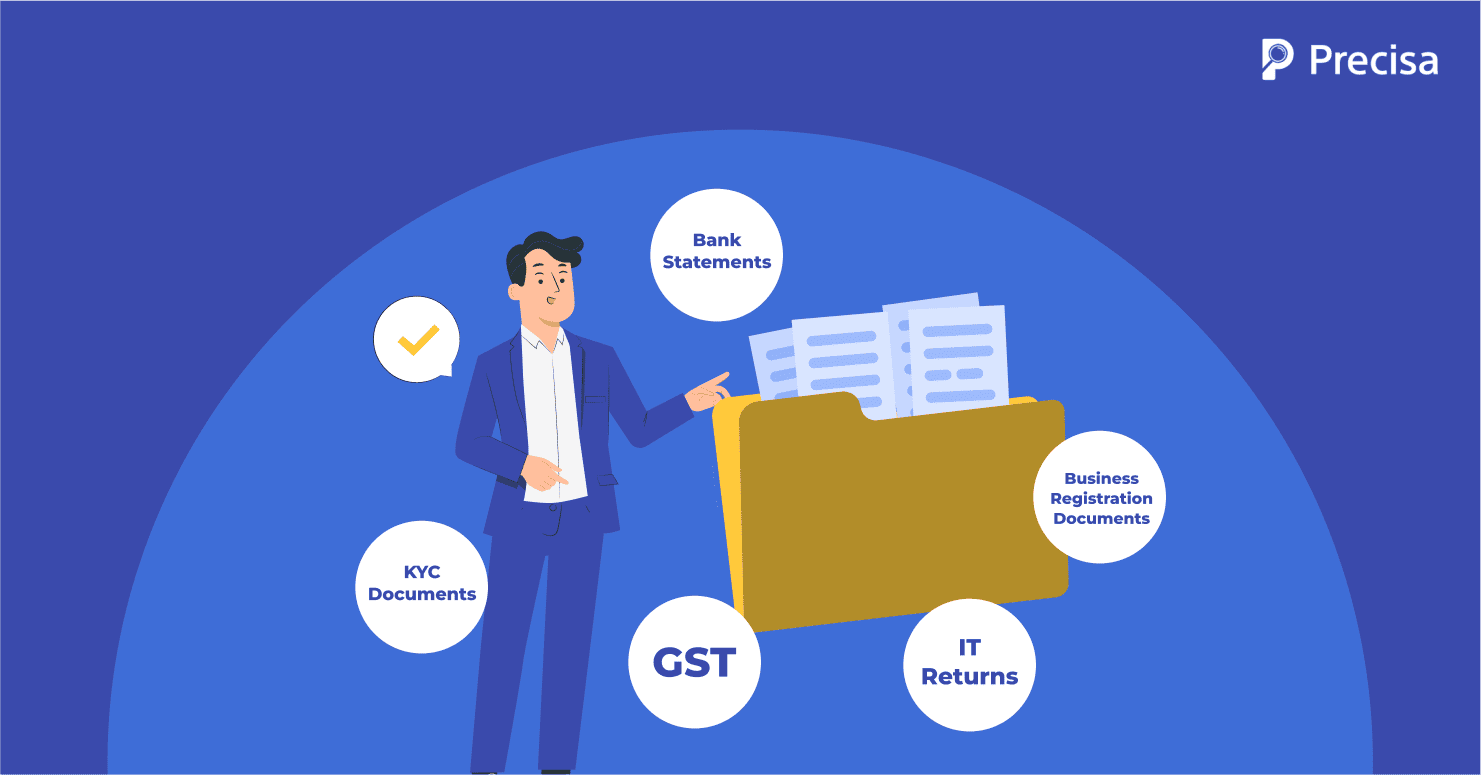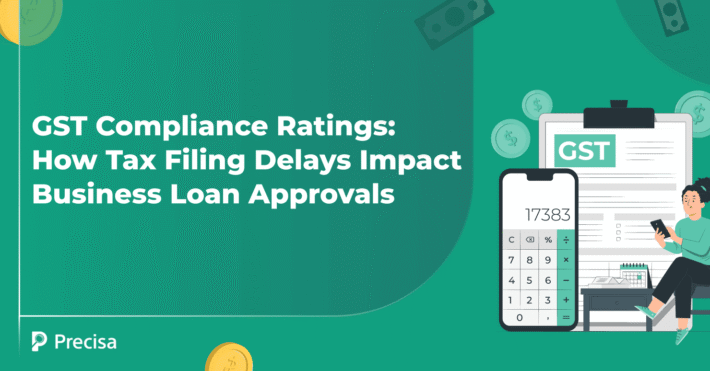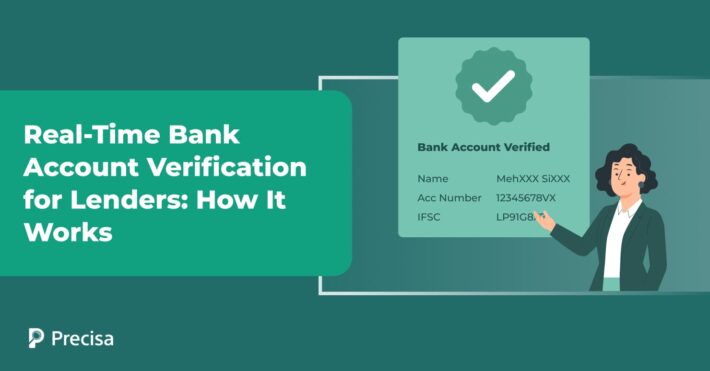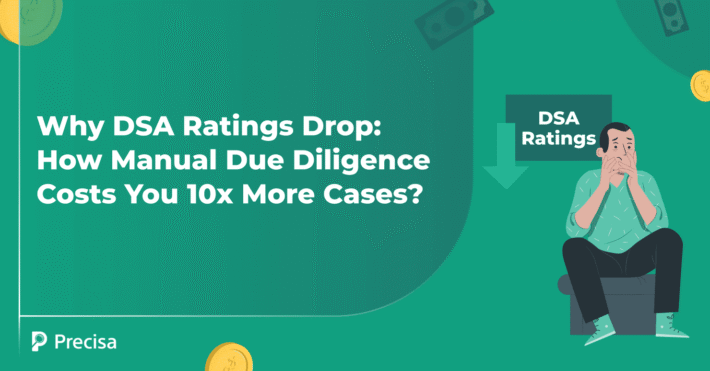The Lender’s Guide to Corporate Loan Document Hierarchy: Critical Papers for Approval Decisions

India’s corporate credit ecosystem has seen remarkable growth in FY 2024–2025. Here are a few figures that support this trend:
The total outstanding bank credit to business (including industry and services) increased to ₹82.73 lakh crore in March 2024, with a 16.3% year-on-year growth.
- Corporate loans to large enterprises grew by 7%.
- The retail loan sector increased by 20%.
- These numbers show a persistent hunger for business expansion across sectors, further increasing the demand for corporate loans in the 2025-2026 FY.
However, the increased volume also means higher pressure and credit risks.
One of the biggest reasons loan applications are delayed or declined is incomplete or disorganised paperwork. Each missing paper could double lending risks.
Therefore, lenders need a standardised approach to document approval, one that mitigates risks and boosts decision-making.
This blog post outlines a simple hierarchy of the documents required for corporate loan approval and shows how AI-powered solutions can help lenders process more applications faster.
Why Document Hierarchy Matters in Lending
Loan documentation is a direct input to the risk assessment process. With gross NPAs dropping to a 12-year low of 2.6% as of September 2024, lenders are taking risk-based screening more seriously than ever. They are keen to keep defaults in check while sustaining this positive momentum.
A clear document hierarchy:
- Prioritises the most relevant documents
- Identifies incomplete applications
- Detects high-risk cases early
- Sets clear standards for loan officers
- Helps different teams follow a uniform structure
- Reduces rework caused by missing or invalid documents
- Speeds up internal approval cycles
Document Hierarchy: Critical Papers Required for Corporate Loan Approval
Here’s a structured way to organise the documents required for corporate loan approval. This three-tier approach will save time and stay ahead of delinquency for banks, NFBCS, and other corporate lenders:
Tier 1: Must-haves
These papers are non-negotiable. An application should not move forward without them. They are:
KYC Documents
They prove the borrower’s or company stakeholders’ identity and address:
- PAN Card
- Aadhaar or Passport
- Utility bill or rental agreement for address proof
Bank Statements
They give direct insight into the company’s cash inflows and spending patterns.
Borrowing companies need to provide the last six months’ bank statements from the business’s primary current account.
However, manual analysis of these statements can take 8-10 hours per application. But with tools like Precisa, this can be completed in minutes.
Income Tax Returns
ITR documents validate reported income and tax compliance. Businesses must submit Income Tax Return (ITR) files for the previous two to three years.
Financial Statements
Financial statements are used for ratio analysis, trend reviews, and repayment potential. Borrowers must submit the following:
- Balance Sheet
- Profit and Loss Account
- Cash Flow Statement
- Statutory or Tax Audit Reports
- VAT Returns (in case of provisional financials)
What helps make more confident lending decisions is if you cross-reference these with bank statements to verify the accuracy of such statements. Again, AI-powered tools like Precisa can help with this.
Business Registration Documents
Company documents help confirm whether a business is legal and eligible to borrow credit. Papers required are:
- Incorporation Certificate
- Memorandum of Association
- Articles of Association
- Trade license
- GST registration certificate
- Partnership deeds
Collateral Documents
They provide financial backup against large loan amounts and are needed only for processing secured corporate loans.
Property title and valuation papers
- Equipment or machinery bills
- Inventory bills
- Accounts receivables
- NOCs from the municipal corporation authorities
- Vehicle documents, if applicable
- Company valuation certificates from an accredited valuer
Every underwriter must check the first set of documents before moving further.
Tier 2: Business Validation Documents
These critical papers add depth to the application and help understand how the loan will be used and repaid.
Business Plan
It outlines a company’s financial forecasts, such as loan utilisation, income statements, business goals, and repayment logic. This includes:
- Description of products/services
- Target market
- Revenue model
- Expansion or project plan
- Loan usage and repayment schedule
Cash Flow Projections
Helps lenders determine a borrower’s daily liquidity needs and ability to manage debt:
- Forward-looking estimates for the next 6–12 months
GST Returns
Goods and Services Tax (GST) returns detail a business’s tax liabilities and real transaction volumes. It is essential to measure the company’s tax compliance.
- GSTR-1 and GSTR-3B of the last 3–6 months
Even here, Precisa’s GSTR Analyser can automatically verify GSTIN, analyse data from these returns, and detect anomalies like cyclical transactions.
MSME/Udyam Registration Certificate
It is a government-issued certification that classifies an enterprise based on its turnover and investment. It is also used to apply a suitable government scheme or benefit during loan valuation.
Utility Bills/Trade Licences
Telephone, electricity, gas bills and trade licences act as secondary proof of operational address or business existence.
Utility bills should be recent (not older than 3 months), and trade licences should be valid and up-to-date.
These documents are particularly helpful when evaluating loans for MSMEs, a segment where credit grew 13% year-on-year as of November 2024, more than double the rate for large businesses.
To keep up with this growing credit demand, automated, AI-powered analysis tools can be of great help not just to bring efficiencies and reduce decisioning time, but also to provide an improved customer experience.
Tier 3: Case-based Supporting Documents
These additional documents vary by loan type, business model, or underwriting need. They become more relevant in high-value cases or when lending to new, unlisted, or seasonal businesses:
- Detailed project reports or feasibility studies
- Board resolution authorising the loan
- Existing loan sanction letters
- Rental agreements
- Machinery or vehicle purchase invoices
- Sales or purchase contracts
- Past credit bureau reports
- Insurance policies on pledged assets
- Net worth statements of partners or directors
Document Review Best Practices for Lenders
With bank profits up 22.2% in the first half of FY25, good loan processing contributes directly to a lender’s bottom line. Here are a few ways lenders can expedite corporate loan approval:
- Create a standard document checklist categorised by the three tiers. By doing so, all officers will follow the same steps when assessing documents.
- Review Tier 1 documents first. If Tier 1 documents are incomplete or missing, do not proceed further. This will save time and help identify gaps.
- Use Bank statement analysers, like Precisa and loan origination tools, to do the heavy lifting of document verification.
For instance, Precisa’s intuitive, cloud-based solution can automate financial data review and calculate key ratios without manual intervention. It can:
- Cross-reference bank statement data with GST records
- Segregate transactions into inflow and outflow categories and subcategories
- Perform risk assessment using data from multiple data sources
- Generate creditworthiness scores, also known as Precisa and Volatility scores
- Run compliance checks as per RBI guidelines
- Use AI protocols to detect unusual transactions and flag potential risks
- Use predictive data analytics to forecast a business’s ability to repay loans
- Help lenders customise loan products based on the financial analysis
Precisa also works well with loan origination systems. You can use them together to automate initial checks, detect unusual patterns in real-time, and free up loan officers’ time so they can focus on exception cases.
The Takeaway
As of March 2024, outstanding credit to industries reached ₹36.83 lakh crore. Lenders need efficient systems to keep up with this demand without increasing risk.
Organising and verifying documents in a tiered manner can streamline approvals, reduce confusion, and allow faster, data-backed decisions.
While traditional document verification is still important, automating the most time-consuming part, i.e., bank statement and GSTR analysis, through AI, ML, OCR, and cloud computing significantly accelerates the process.
Precisa’s Bank Statement Analysis tool can cut down loan approval time from weeks to just a few days.
To know more, sign up for a free trial.




